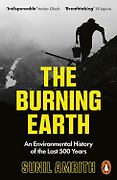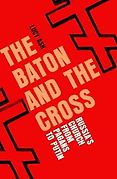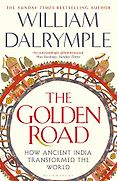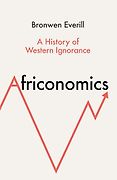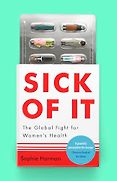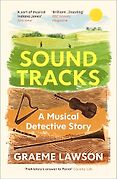For those who don’t know it or have seen it evolve, perhaps you could start by introducing the prize. It’s awarded annually by the British Academy, our national academy for the humanities and social sciences. What kind of books are you, as judges, looking for?
The prize celebrates “works of nonfiction, based on exceptional research and written for the general reader, that deepen our understanding of people, societies and cultures and their interactions across time and place.” The key thing is that these are works that are aimed at non-academic readers, but come out of serious research.
It celebrates the skills, values, and importance of the social sciences and humanities that the British Academy advocates. To be grandiose about it, the prize exemplifies the kinds of things that the British Academy thinks the arts and social sciences can contribute to the world.
It’s about scholarship that’s substantial and involves engagement with questions like ‘What sources are you using? How robust is the data? How does what you’re arguing connect to what we already know?’ In terms of the foundation and robustness of the research, we’re looking for that scholarly apparatus that we’re used to seeing in the work done by fellows at the British Academy.
But the work has to talk to general readers. We don’t want something that is a heavy slog. That is not what we’re after. We want something that’s written in sparkling and engaging prose that will be a pleasure to read.
Looking at this year’s shortlist, it ends up being quite an international set of books—about all sorts of places around the globe.
That’s absolutely right. The books are global in terms of the topics that they cover and where the authors are based. That’s been the case since the prize was created more than a decade ago. In its 12 or so years of existence, it’s shortlisted scholars from Uganda, Sweden, Bulgaria, Chile, and India, as well as from the UK. It’s also global in terms of the bigness of the topics that we want the scholars to be engaging with. They can study something very specific and very focused on a particular place, but they should be engaging with topics that are really broad and have to do with the human condition.
Let’s look at what books you came up with for the 2025 shortlist. First up is The Burning Earth: An Environmental History of the Last 500 Years by Sunil Amrith. He’s a professor of history at Yale who also has a post at the Yale School of Environment. Could you tell us about it?
This is a magisterial work and quite extraordinary. The title undersells it because it goes back much farther than the last 500 years.
It shows that you can’t tell history—whether it’s the history of the past 50 years or the past 500 years or the past 1000 years—without paying attention to the role of the environment. The environment is not something that’s happening on the side of history. They’re intertwined, and you can’t separate them out. The book shows this really compellingly.
It illustrates how events that we might think about as completely unrelated were connected through the environment. For instance, Amrith mentions research suggesting that the European invasion of the Americas that started in 1492 with Columbus contributed to the Little Ice Age that lowered temperatures all over the world. Perhaps the freezing over of the Thames in the 1600s was caused in part by the conquest of the Aztec empire on the other side of the Atlantic a century earlier.
The second really big thing the book does is show how today’s ideas about the good life can’t be separated from dominating the environment. Over the last 500 years, we began to think that we could conquer the environment rather than simply living with it. Ultimately, this view has been behind the environmental catastrophes that we’re seeing today.
The Burning Earth shows in particular the role of fossil fuels in shaping our ideas about freedom, and in helping some of us realise those ideas. It looks at this contradictory situation where fossil fuels, and the transformation of the world they enabled, allowed a great flourishing for some people around the world. Fossil fuels became connected to what we think it means to be free, but they came at a terrible cost, and they didn’t bring freedom to everybody.
Let’s go on to the next book, which is focused on Russia. This is The Baton and the Cross: Russia’s Church, from Pagans to Putin by Lucy Ash, which looks back at about a millennium of history. Tell me more.
The book does have a historic sweep and looks at the ebb and flow of the Russian Orthodox Church’s relationship with political power, but it’s particularly interested in the current close relationship between the Russian Orthodox Church and Putin.
It shows there’s always been a kind of tango going on between the Russian Orthodox Church and whoever was in charge. Sometimes they’ve been dancing in harmony, and sometimes—maybe this is such a terrible metaphor that I should abandon it—it’s not a dance at all, and they’re throwing things at each other. But they’re always in a dynamic relationship with each other.
Ash focuses particularly on what is going on right now. Why are members of the Russian Orthodox Church blessing the tanks that are being sent into Ukraine? What is the position of clerics of the Russian Orthodox Church who don’t feel so enthusiastic about the war? What sorts of experiences are they having? How do members of the congregations of these churches feel about any of this?
The book is based on lots of on-the-ground research in Russia in the last decade or so, and it’s told by a journalist who has considerable expertise of living and working in Russia.
Let’s turn to The Golden Road: How Ancient India Transformed the World by William Dalrymple.
This is another book that tells a really big story. It has a very good introduction that gives a sense of what the book is about, and then, in subsequent chapters, goes into great detail with multiple, very lively examples.
The argument is that ancient India made foundational contributions to the development of many countries around Asia, and that this hasn’t been recognized sufficiently. For example, it reminds us that India, the wellspring of Buddhism, and Indian Buddhist monasteries, played a fundamental role in shaping the development of Buddhism in China—where Buddhism ultimately became a much more important religion than in India.
It shows the role of Indian science in shaping practices across both Asia and Europe, looking, for example, at mathematics. For instance, the notation that we think of as ‘Arabic numerals’ actually originated in India. Modern mathematics, which Europe encountered via Arabic science, ultimately came from India.
Many contributions shaping the cultures of countries all around Asia, and Europe as well, can be traced back to ancient India. Dalrymple’s title, The Golden Road, is meant to offer an alternative to the better-known expression, ‘the Silk Road.’ This largely maritime ‘golden road’ spread India’s ideas, practices, and knowledge all around Asia.
Let’s go to Africa now. The next book on the shortlist is Africonomics: A History of Western Ignorance by Bronwell Everill. That’s quite a statement. What’s this book about?
This is not a history of African economic development or of the economies of any or all African countries. It is about how, starting in the late 18th century and continuing pretty much up to the present, over and over again, even the best-intentioned Western interveners in Africa have consistently misunderstood the economic systems in whatever bit of Africa they happen to be in. Over and over and over again, they failed to recognize the extent to which these African economies were highly developed and indeed often reflected the kinds of economic principles and policies that economists today expect.
But instead of seeing that, Westerners—ranging from those who were trying to abolish the slave trade to those advocating post-war development—kept insisting that Africa was a backward agricultural region that needed to modernize, to industrialize, to integrate, to develop. People in Africa, they insisted, didn’t understand anything about economics, so Africans needed Westerners to explain to them how to organize things.
And over and over, these Western ideas were wrong, unhelpful, and frequently had terrible consequences for the African economies that were the objects of Western intervention.
Is there a specific example from the book that springs to mind?
There’s an interesting discussion of the slave trade, for example. In the 19th century, well-intentioned people from Britain wanted to abolish not just the transatlantic slave trade—which of course only existed because of Europeans in the first place—but also the internal slave trade in Africa. That had existed before the arrival of Europeans, but had been transformed substantially. Europeans came along and said, ‘We’ve ended the transatlantic slave trade. Well done us. Now we’ve got to stamp out the remaining slave trade in Africa, which is also horrible.’
That was a worthy goal, but it was based on not understanding how the slave trade functioned in these African countries. They tried to stamp out the slave trade without realizing the knock-on consequences that this was going to have on what were very complicated, integrated economic systems where control over labour was really important. You couldn’t simply pull out that element without the entire system collapsing and leaving nothing in its place.
Everill is an economic historian, and she does a fine job of explaining economic concepts in simple language, which makes Africonomics accessible to non-specialists. For example, she explains the concept of comparative advantage like this: ‘If you and your seven-year-old daughter are going to be doing some household tasks, one of you could mow the lawn and the other empty the dishwasher. You could do either. Your daughter could probably manage both too, but might she not be better off emptying the dishwasher while you mow the lawn?’.
OK, so we’re now at a book called Sick of It: The Global Fight for Women’s Health by Sophie Harman.
One of the judges described this as ‘a passionate polemic.’ The author is a professor of international politics at Queen Mary in London, with 20 years of experience working on global health politics. This is a book that has come out of a lot of thought and active engagement.
The first part looks at the way in which women’s health has been weaponized for all sorts of purposes that have nothing to do with women’s health per se. Women’s health, she shows, has often been a ping pong ball that’s batted back and forth between international aid agencies and countries that are pursuing other agendas. She argues, for example, that the government of Rwanda has used a focus on maternal health to distract attention away from other less savoury things that they’ve got up to.
It’s a hard read—not in terms of the language, as it’s very clearly written—but because it challenges readers to re-evaluate policies that on the surface seem entirely beneficial.
The second half of the book looks particularly at the women who deliver global health programmes, such as the community health workers, who are generally unpaid, but are delivering a lot of the international aid all around the world. They’re at the sharp end of the fight for women’s global health, and are themselves affected by some of the dysfunctionalities in global health care policies—both as patients and as health practitioners.
But say a country is using it to deflect attention from other things, doesn’t that still help women’s health? Even if the reason for the attention is a bit nefarious, doesn’t it still mean there is support being given to women’s health, or is she arguing that’s not the case?
Harman doesn’t say all international aid is a calamity and should be stopped. She’s not saying that at all. What she’s looking at is the way it flows down through particular channels that might help some women but not others. For instance, she considers the emphasis on maternal health in many international aid programmes. Maternal health is really important, to be sure, but that may not be the best focus. Perhaps other things actually cause more women to die, but maternal health clinics may not be able to address any of them.
So you get very focused attention on certain areas. If you were designing them from the ground up with the aim of improving women’s health, these might not be the policies you’d be coming up with.
We’re now at the final book on the 2025 shortlist. This is Soundtracks: A Musical Detective Story by Graeme Lawson.
This is a joyful read. It’s by a leading musical archeologist, which might not be a discipline you even knew existed.
Lawson doesn’t call it ‘a history of sound in X objects’ but that might be a helpful way of thinking about it. It has lots of wonderfully short and readable chapters, each one about an archeological find of some sort of musical instrument, that help us understand the sounds of the past.
The book starts in the present and works backwards. Like an archeological dig, you’re unearthing layer after layer. He goes back to the very origins of humanity and looks at our very ancient ancestors, their sense of rhythm and sound, and how we might detect that through archaeology.
Graeme Lawson not only knows an awful lot about archeology. He also knows how to take a squashed bit of metal, recognize that this was a flute from the Middle Ages, reconstruct it, build a replica—and then figure out how to play it so you can hear the sound it actually made. It’s just extraordinary. You can hear the past.
The book is also very good at giving a sense of what archeology does and how archeologists approach things. It points out, for example, that archeology isn’t generally very good at attaching the names of people to things. Archaeologists are in general not able to say ‘this squashed bit of flute belonged to so and so.’ There are some cases where you can do that—maybe sometimes they have a little name carved on them.
But archaeology is not really about people with names. It’s about things. What archeologists do is look at the stuff that people had, and from these material traces they try to recover something of what it was like to be alive in the past.
This may not be a surprise to archeologists, but Lawson does a fine job of conveying the texture and practice of archaeology to a broader public.
For example, Lawson looks at the detritus left in a medieval workshop in Oxford, where they made and repaired musical instruments. It was right in the center of Oxford, and Lawson talks us through the piles of stuff they had, to explain what the urban scene was like for somebody who wanted to buy a musical instrument in medieval Oxford.
Thanks so much, Rebecca. What an intriguing set of books! I look forward to hearing which one wins.
Yes, the winner is the winner, but we really want to stress the importance of the whole shortlist as a representation of what it is that the humanities and social sciences bring to the world. That’s what the shortlist always tries to do, and I hope we’ve accomplished it.
Well, it’s a great public service to have you and the other judges evaluating these books. There are so many books out there, you never know which ones are actually good books and which have just been marketed a lot. So thank you for taking the time to do this.
It’s a great pleasure.
The winner of the 2025 British Academy Book Prize will be announced on the 22nd of October.
Interview by Sophie Roell, Editor
October 9, 2025. Updated: December 1, 2025
Five Books aims to keep its book recommendations and interviews up to date. If you are the interviewee and would like to update your choice of books (or even just what you say about them) please email us at [email protected]
Five Books interviews are expensive to produce. If you've enjoyed this interview, please support us by donating a small amount.


